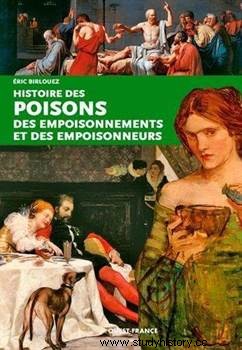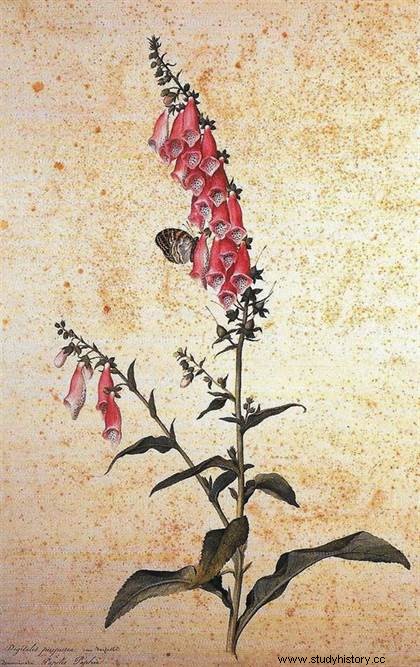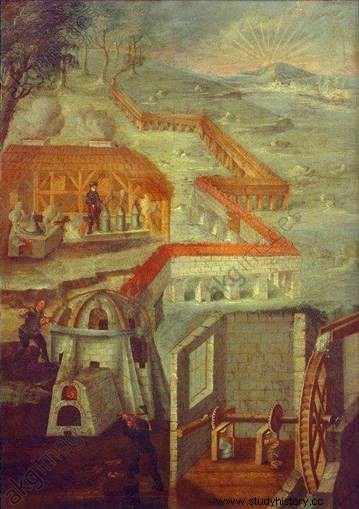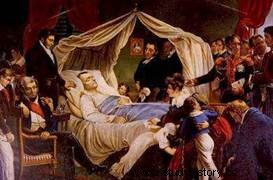 For millennia, the perfect crime has had its ideal weapon:poison . Well controlled, it kills for sure and gives the illusion of a natural death. Eric Birlouez's work takes us into the fascinating world of "witch herbs" such as the fatal mandrake and the deadly belladonna, toxic minerals (mercury, arsenic cyanide). Man has long since realized that the same substance could be both a remedy and a poison, to cure or to kill.
For millennia, the perfect crime has had its ideal weapon:poison . Well controlled, it kills for sure and gives the illusion of a natural death. Eric Birlouez's work takes us into the fascinating world of "witch herbs" such as the fatal mandrake and the deadly belladonna, toxic minerals (mercury, arsenic cyanide). Man has long since realized that the same substance could be both a remedy and a poison, to cure or to kill.
Poison:what is it?
According to the great medieval doctor Paracelsus, often considered the founder of toxicology, it is the dose that makes the poison. Since prehistoric times man has used toxic substances for hunting. Toxicon is a Greek term meaning arrowhead poison. Two thousand years before Paracelsus, Hippocrates had shown that depending on the quantity ingested and the way of administering them, certain substances could be harmful or beneficial to health.
 Willow bark was used to bring down fever (it will extract acetylsalicylic acid, the principle active in aspirin). The dangerous mandrake employed by medieval poisoners was used in small quantities to ease the pains of childbirth. Maleficent colchic was described as a remedy for gout. Similarly the aconite used to poison the arrows could serve as an antidote to a person bitten by a venomous snake. Henbane, fatal in high doses, was sovereign against coughs, skin diseases and eye inflammations.
Willow bark was used to bring down fever (it will extract acetylsalicylic acid, the principle active in aspirin). The dangerous mandrake employed by medieval poisoners was used in small quantities to ease the pains of childbirth. Maleficent colchic was described as a remedy for gout. Similarly the aconite used to poison the arrows could serve as an antidote to a person bitten by a venomous snake. Henbane, fatal in high doses, was sovereign against coughs, skin diseases and eye inflammations.
The products of nature that could be used as a remedy - but also as a poison - were found over the counter in the "pharmacopolises" ancestors of our current pharmacies, the word pharmakon having the double meaning of poison and remedy. The practice of poisoning, although very severely condemned by the courts, was not uncommon in ancient Greece, where certain doctors did not hesitate against payment to put to death a person whose entourage was in a hurry to get rid of.
For many living beings (plants, animals, microorganisms) poison is a weapon of survival. The substances they produce allow them to kill or paralyze the prey they feed on and some plants protect themselves in this way against insects or animals that may eat their leaves.
The kingdom of plants, fungi, and the animal kingdom are the greatest suppliers of toxic substances as well as minerals:arsenic, mercury, lead, antimony .
How poisoning works
A poison enters the body in different ways:by ingestion (it enters the blood) through the skin (wound or cut) through the veins (snake fangs, sting of the scorpion, syringe) through the eyes.
Depending on age, state of health, genetic predispositions, humans do not react in the same way, as do animal species; some berries that are deadly to humans are harmless to caterpillars or birds that eat them. Neurotoxic poisons like mercury act on the nervous system while cytotoxic substances disrupt cell function. Haemotoxic poisons (snake venoms) prevent blood coagulation, some poisons (venom of certain vipers) combine neurotoxic, haemotoxic and myotoxic substances (muscles).
Renaissance poisons and arsenic
During the Middle Ages, the practice of poisoning continued unabated and many poisoners were arrested and led to the stake, especially women who, at that time, were perceived as diabolical creatures. The healers-midwives have a deep knowledge of nature which worries medieval society, tens of thousands of people are the subject of a witch hunt (organized by the church and the sinister inquisition) which subjects them to the torture and send them to the stake!
 During the Renaissance, killer plants became more and more known, which is why new, less detectable mixtures appeared. the day. They associate killer plants with animal poisons and mineral elements.
During the Renaissance, killer plants became more and more known, which is why new, less detectable mixtures appeared. the day. They associate killer plants with animal poisons and mineral elements.
Semi-metallic element present in certain ores, arsenic, almost odorless and extremely toxic, inexpensive and almost undetectable, was considered until the 19th century as the "king of poisons”.
In Renaissance Rome, the Sicilian Giulia Toffana, considered one of the greatest poisoners in history, invented the acqua Toffana, a deadly potion in which arsenic was widely used. hand, offering it to women who wanted to get rid of their husbands. In less than twenty years, six hundred spouses would have succumbed to it!! At the time of the “poison affair” under the reign of Louis XIV, the poisoner La Voisin was burned along with other people, including the famous Marquise de Brinvillier, for using this deadly ingredient. The Marquise de Montespan herself is implicated in this dark affair.
But arsenic has been used since antiquity as a remedy, for example, to combat syphilis. English Thomas Fowler developed with this ingredient a treatment to fight against fevers, epilepsy, skin conditions, lumbago... Arsenic was also used to make paintings, hangings.
Famous deaths by poison
 Accused of corrupting youth and disrespecting the gods of the city, Socrates was sentenced by a court of 'Athens to commit suicide by drinking a substance of sap of hemlock, poppy and other elements. Cleopatra allegedly committed suicide using snake venom. Forced to abdicate, would Napoleon have tried to commit suicide by poison? Was Henriette-Anne of England, wife of Louis XIV's brother, poisoned as she believed?
Accused of corrupting youth and disrespecting the gods of the city, Socrates was sentenced by a court of 'Athens to commit suicide by drinking a substance of sap of hemlock, poppy and other elements. Cleopatra allegedly committed suicide using snake venom. Forced to abdicate, would Napoleon have tried to commit suicide by poison? Was Henriette-Anne of England, wife of Louis XIV's brother, poisoned as she believed?
The history of poisons and poisoners seems as old as the search for the perfect crime. The ideal poison is a weapon that has three essential advantages:it kills in a sure way, it is undetectable and gives the illusion of a natural death. The history of humanity is full of examples of voluntary poisoning aimed at getting rid of an enemy, a spouse, a political rival or any person whose property arouses covetousness. Poison is still used to execute those condemned to death.
History of poisons, poisonings and poisoners, by Eric Birlouez. Ed Ouest-France, June 2016.
